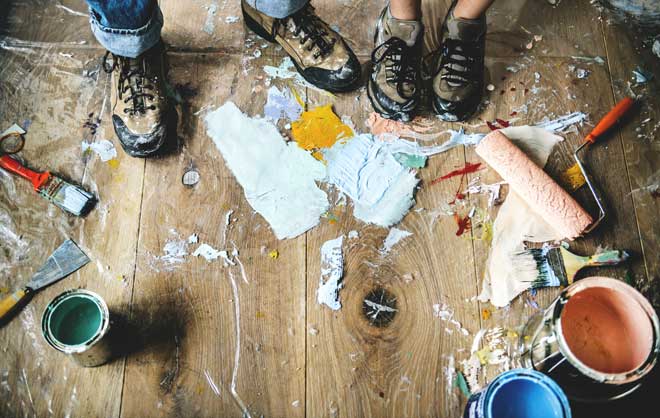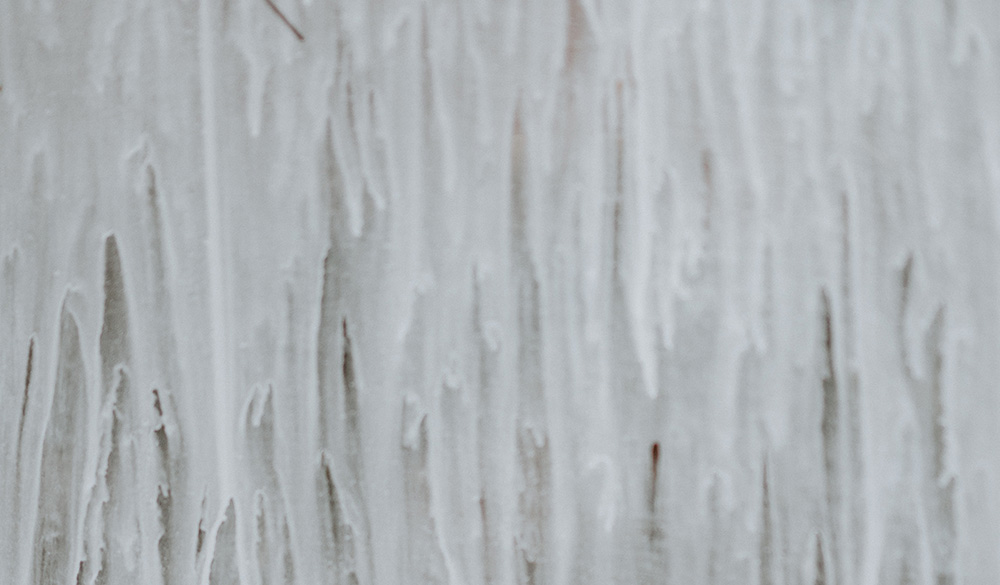How can you tell if a paint job is bad?
When you hire a professional painting team to repaint your interior, you expect professional results. Unfortunately, that’s not always what you get. Unskilled or dishonest painters can leave you with walls that look untidy, fast become blistered or cracked, and end up looking a whole lot worse than what you started with. If you suspect the painting team you hired has delivered anything less than perfect, we suggest keeping an eye out for the following four tell-tale signs of a bad paint job.
1. Stains and flaws are visible through the paint
We cannot tell you how many times we’ve been called into a freshly painted property only to find stains, marks, dents, and other flaws on the walls. If you can see areas of discolouration or uneven surface texture after you’ve called in the so-called pros, chances are they failed to do one or more of the following:
- Clean your walls: if your walls are stained before the paint is applied and there is no effort to remove these stains, they’ll most likely be visible through the newly applied paint. This is especially true if you have opted for a white or light colour.
- Fill in any holes: all holes, including small holes from things like picture hooks, should be filled, sanded, and primed before paint is applied.
- Prime: primer helps cover up stubborn marks and ensures your new paint shows true-to-colour.
2. The paint is streaky or blistered
Streaks and blisters are clear signs that your paint was not applied properly. Most likely, the painting team you hired didn’t give each coat enough time to dry before applying subsequent coats. This traps moisture – as well as dust and dirt particles in the air – beneath the paint, preventing it from properly adhering to the surface.
3. The paint looks faded
Generally, faded paint suggests that the painter didn’t apply the correct number of coats. Most paints require two or more coats to ensure they show up clear, vibrant, and true-to-colour. This tell-tale sign is particularly noticeable if you’ve chosen a dark or bright colour for your walls.
4. You have paint splatters all over your floor
Yes, DIYers do tend to end up with paint splatters all over their floor and furniture. But professionals should have the experience – and, quite frankly, the respect – to ensure their clients’ homes and belongings are properly protected throughout the painting process. Your professional painters should move all furniture into the centre of the room before laying drop cloths over the floors and using painters’ tape to cover up any fittings and fixtures.

No Wall Preparation Was Done
For a paint job to turn out well, the wall must be clean and largely free from damage. Before applying paint, a professional painter prepares the wall by repairing minor flaws such as small dents and cracks, removing old paint when necessary or sanding old high-gloss paint so the new paint will stick. After this, the painter should thoroughly clean and rinse the wall, then allow it to dry.
Your painter should also come prepared with more than just some buckets of paint and a brush. They’ll need caulk, various types of brushes and rollers, edging tools, a sturdy ladder, and other professional supplies. If you see them using masking tape instead of painter’s tape, which is wider and typically blue or green, you know the job is unlikely to go well.

There was no room preparation
Any successful paint job begins with solid room preparation. It’s this step of the process that ensures all your belongings are safe, protected, and out of the way of the work being done. In order to be best protected from paint products, abrasive tools, and work boots, the floor of the room being painted must be covered with a layer of plastic. All furniture that can be moved out of that space should be relocated, and whatever needs to stay should be layered with drop cloths to prevent paint spots. Failing to do these things can make the room—and the items in it—susceptible to damage that could’ve been avoided. As such, if your painters happen to skip this step, it’s probably a sign that you should call off the project.
The wall wasn’t cleaned or repaired
Our home’s walls can collect and hold onto years worth of dirt, dust, and grime—all of which can affect how well new paint sticks to its surface. Painting a wall without properly cleaning and repairing it first raises the risk of your finished product being blotchy, inconsistent, and simply unpleasant to look at. Because of this, the painters that you choose to take on the work must also be willing to wipe down the walls and allow it enough time to dry before starting. If they apply the paint while the wall is still wet, the fresh product could also fail to stick at all and begin running down the surfaces. Therefore, you’ll want to find professionals who are willing to take their time and do what’s necessary to get the paint to apply properly.

Sags/Runs
These are the most common auto paint job errors. Having sags, drips, and dried streaks in professional painting is inexcusable. You can tell poor brush or roller technique by the shadows forming around and under them.
Paint splatters/drippings – Take the time to check the floor, furniture, and walls adjacent to the painted surface. If you see splatters and drips, this means that the auto shop did not use drop clothes or employ correct “cutting in” techniques.
Stipple – Stipple refers to the texture or pattern that is left behind by paint rollers. A wrong brush was used if you see stipples that are quite heavy.
Over spray – This happens when paint is not correctly applied. Different factors may affect this process, including the spray tip, weather conditions, and use of spray shields. A knowledgeable auto paint shop knows how to handle these situations.
Improper/incomplete substrate repair – If you notice chalking, staining, peeling, or an inconsistent texture or sheen on your paint job, this indicates that you receive poor interior or exterior substrate work.
Lack of Primer
A good painting company will ensure that they use primer on your interior walls prior to painting. Primer guarantees greater longevity of your paint. It enhances the color and helps with a smooth application and finish.
No Second Coat
Skipping the second coat of paint is another sign of a poor paint job. A company that excludes this step is looking to cut corners. This will not only cost you timely repairs later but also more money later to fix this mistake. By applying two coats of paint, your walls will look better, and the color will last longer.
Bypassing the Color Consultation
Do not forget to have a color consultation with the company you hire. If the professional painting contractor does not discuss the colors you want, you might end up with a paint job you are unhappy with down the road. It is essential to discuss this with your contractor in order to be happy with the results.